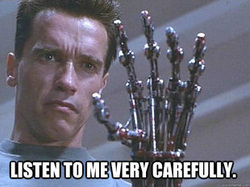
What began as fiction back in the 90s has become science fact. Distributed intelligence is real and is having positive (and negative) effects on classrooms. It is important to understand exactly what is meant by distributed intelligence. Intelligence is a term most often associated with an act. How do we know people are intelligent? Well, they perform certain activities. How do we know rocks aren't intelligent? Well, they don't perform activities. Distributed Intelligence refers to activities (cognitive) that require multi-agents. An early example of this was in a protein folding screen saver (Folding@home) which utilizes the combined processing power of over 330 000 computers to analyze and model protein folding characteristics. By using multiple agents the researchers are able to exponentially increase their analysis of data. The benefits of distributed analysis are undeniable (SETI@home is another example).
What implications does this have for the classroom? Pea (1993) states: " widespread conceptions of learning and reasoning invoke 'intelligence' largely as a property of the minds of individuals." He goes on to challenge that statement that knowledge, more often than not, is a social construct. Shared objectives between individuals and challenges to one's perspective is what helps all people to develop their knowledge. It then becomes reasonable that distributed intelligence be promoted in the classroom.
Although many blog post will boast the importance of the typical social media sites, I am going to take a little detour into the world of wikis. The wikis are the best example of how social media plays a role in distributed intelligence. Not only are wikis socially constructed, but they are also peer monitored. The creation and maintenance of a classroom wiki is one of the most useful activities a teacher could promote. Students generate a wiki of their combined knowledge from their class. The fact that it is peer monitored only enhances the level of thinking that the students must perform. It is also a great way for students to be held accountable for their learning. A teacher may be needed initially to demonstrate proper practices, but eventually could step back as the engine of creativity from their students takes hold and propels the project forward.
Fischer (2006) claims that even individual creativity has its basis in life experience, culture, education and background knowledge. All of these elements point to the idea that individual creativity is merely an offshoot of social creativity. Fischer cites another author, Csikszentmihalyi, in providing a definition for creativity: "an idea or product that deserves the label 'creative' arises from the synergy of many sources and not only from the mind of a single person."
In order to promote knowledge and creativity in our classrooms I believe the idea of distributed intelligence and social creativity should be given significant consideration. As an extension, social media should play a huge role as it creates the platform for which ideas can be discussed, argued, and originate.
References
Image source: http://www.quickmeme.com/Atheist-Terminator/?upcoming
Fischer, G. (2006). Creativity and Distributed Intelligence. Accessed from http://www.cs.umd.edu/hcil/CST/Papers/distributed.pdf on July 13th, 2013.
Pea, R.D. (1993). Practices of distributed intelligence and designs for education. Distributed cognitions: Psychological and educational considerations. Cambridge University Press: Cambridge, pp. 47-87.
Significant Comments
http://alanasinternetandeducationsite.weebly.com/1/post/2013/07/communication-part-3.html?
http://jenseducationportfolio.weebly.com/3/post/2013/07/topic-4-communication-iii.html?
 RSS Feed
RSS Feed